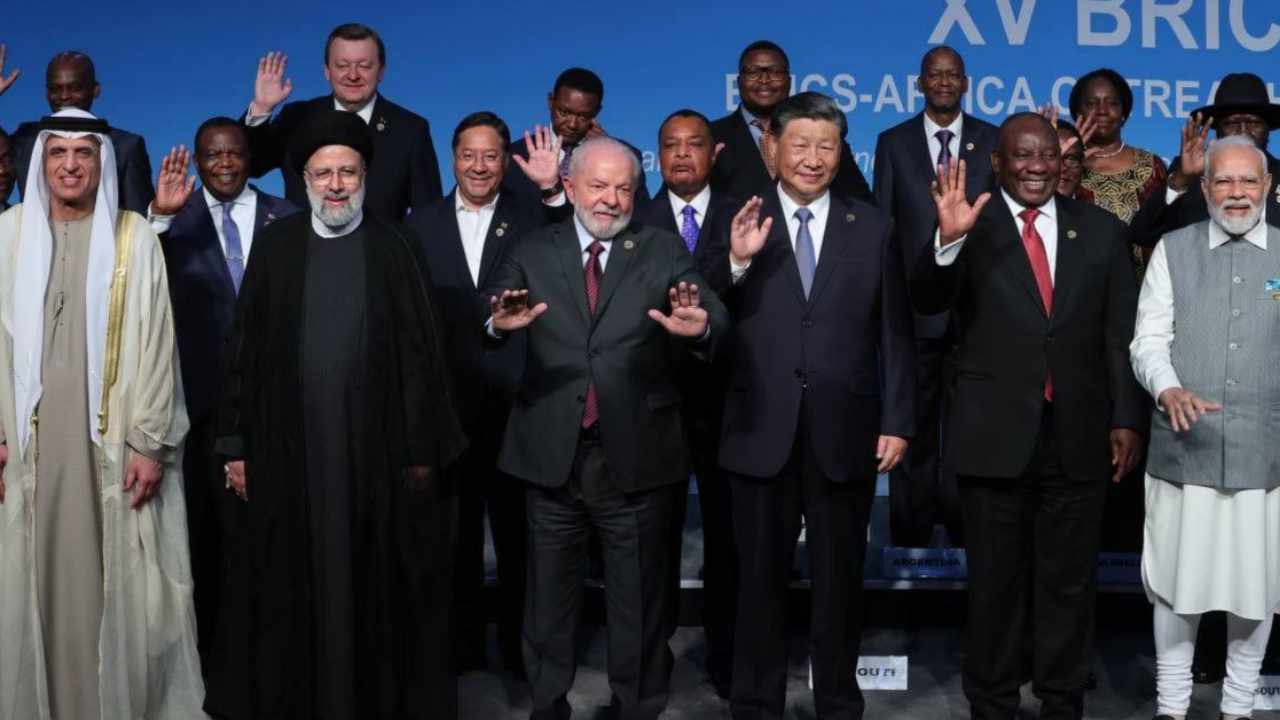
BRICS Plus’ın Transit Koridorlarının Geliştirilmesindeki Rolü ve Küresel Ticaret Üzerindeki Etkisi
İran, Mısır, Birleşik Arap Emirlikleri, Suudi Arabistan ve Etiyopya gibi yeni üyeleriyle BRICS Plus, uluslararası lojistik ve taşımacılıkta önemli bir aktör olarak ortaya çıkmıştır. Süveyş Kanalı ve Hürmüz Boğazı gibi önemli transit yollarını kontrol ederek ve Kuzey-Güney Koridoru gibi uluslararası koridorları geliştirerek, BRICS Plus küresel ticaret akışlarını yeniden tanımlamaktadır. Bu makale, grubun transit altyapısını geliştirme rolünü, küresel ticaret üzerindeki etkisini ve karşılaştığı zorlukları incelemektedir.

Küresel Ticarette Transit Koridorlarının Önemi
Çin’in Kuşak ve Yol Girişimi veya Kuzey-Güney Koridoru gibi transit koridorları, küresel ticaret için kritik arterler olarak hizmet vermektedir. Bu yollar, kıtalar arasında malların verimli ve maliyet etkin bir şekilde hareketini sağlar. Stratejik coğrafi bölgelerde bulunan üyeleriyle BRICS Plus, bu koridorları güçlendirme konusunda önemli bir potansiyele sahiptir. Örneğin, Mısır’ın Süveyş Kanalı üzerindeki kontrolü, İran’ın Basra Körfezi ve Hazar Denizi’ne erişimi ve Brezilya’nın önemli Atlantik limanları, küresel lojistik gelişimi için stratejik avantajlar sunmaktadır.
İran’ın Transit Koridorlarındaki Rolü
Yeni bir BRICS üyesi olarak İran, transit koridorlarının geliştirilmesinde merkezi bir rol oynamaktadır. Asya, Avrupa ve Orta Doğu arasında bir köprü konumundaki coğrafi konumu, Doğu-Batı ve Kuzey-Güney ticaret yollarının entegrasyonunu kolaylaştırmaktadır. Hindistan’dan İran üzerinden Rusya’ya uzanan Kuzey-Güney Koridoru, BRICS Plus için amiral gemisi bir projedir. Bu koridor, Hindistan ve Rusya arasındaki transit süresini ve maliyetlerini önemli ölçüde azaltabilir, bu ülkeler arasındaki ticareti artırabilir.
Ayrıca, İran’ın Çabahar gibi limanlarının geliştirilmesi, Hint Okyanusu’na erişim sağlayarak Hindistan ve Çin mallarının Orta Doğu ve Avrupa pazarlarına ulaşması için bir kapı görevi görmektedir. BRICS’in 382.000 kilometrelik demiryolu ağının bir parçası olan İran’ın genişleyen demiryolu altyapısı, grubun taşıma kapasitesini daha da artırmaktadır.
BRICS Plus Lojistik İşbirliği
BRICS Plus, küresel rekabet gücünü artırmak için ulaşım altyapısını geliştirmeye odaklanmıştır. Örneğin, Rusya’nın BRICS tahıl borsası kurma önerisi, fiyatları istikrara kavuşturabilir ve grup içi tahıl ticaretini artırabilir. 2023 yılında, BRICS ülkeleri 1,17 milyar ton tahıl üretti ve bu, küresel üretimin %42’sini oluşturdu. Yeni üyelerle birlikte bu rakam 1,24 milyar tona yükseldi.
Ayrıca, BRICS Plus, Batı kontrolündeki yollara bağımlı olmayan bir ulaşım yolları ağı oluşturmaya çalışıyor. Bu, özellikle Batı yaptırımlarının geleneksel ticaret yollarını kesintiye uğratması nedeniyle kritik öneme sahiptir. Örneğin, Rusya ve İran’a uygulanan petrol yaptırımları, bu ülkeleri alternatif transit koridorları geliştirmeye itmiştir.
Lojistik Zorluklar
Potansiyeline rağmen, BRICS Plus lojistik zorluklarla karşı karşıyadır. Etiyopya gibi bazı üye devletler, Afrika Boynuzu’ndaki stratejik konumlarına rağmen yeterli liman altyapısından yoksundur. Ayrıca, özellikle Çin ve Hindistan arasındaki siyasi ve ekonomik gerilimler, lojistik işbirliğini engelleyebilir. 2025 yılında ABD’nin gümrük tarifesi tehditleri gibi dış baskılar da bazı üyelerin transit projelerine yatırım yapmasını caydırabilir.
Küresel Ticaret Üzerindeki Etki
BRICS Plus tarafından transit koridorlarının geliştirilmesi, küresel ticaret dinamiklerini yeniden şekillendirebilir. Panama Kanalı veya Malakka Boğazı gibi Batı kontrolündeki yollara bağımlılığı azaltarak, BRICS Plus ticaret akışlarını alternatif yollara yönlendirebilir. Bu, yalnızca grup içi ticareti artırmakla kalmaz, aynı zamanda gelişmekte olan ülkelerin küresel ticarette daha aktif bir rol oynamasını sağlar.
Ayrıca, transit koridorlarının geliştirilmesi yabancı yatırımları çekebilir. Örneğin, Çin’in İran’daki Çabahar limanı ve Mısır’daki Süveyş Kanalı projelerine yaptığı yatırımlar, bu ülkelerin ticaret kapasitelerini artırabilir. Bu tür yatırımlar aynı zamanda iş yaratır ve yerel ekonomileri güçlendirir.
Sonuç
BRICS Plus, transit koridorları ve lojistik altyapıya odaklanarak küresel ticarette lider konumuna yerleşmektedir. İran, Mısır ve diğer yeni üyelerin rolleri bu süreçte kritik öneme sahiptir, ancak başarı iç ve dış zorlukların üstesinden gelmeye bağlıdır. Bu yolda ilerlemeye devam ederek, BRICS Plus, Batı’nın egemen olduğu ticaret sistemine güçlü bir alternatif olarak ortaya çıkabilir.
Kaynak: Eghtesad Moaser – Gelişmekte Olan Ekonomilerin Çıkarlarını ve Haklarını Güçlendirme
